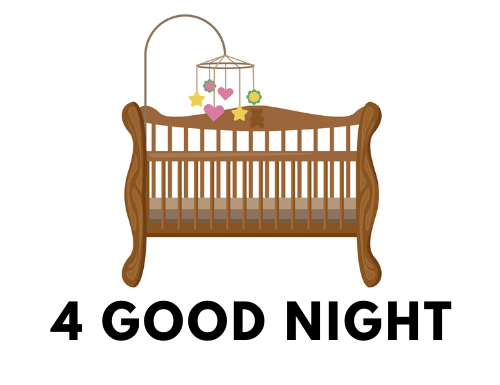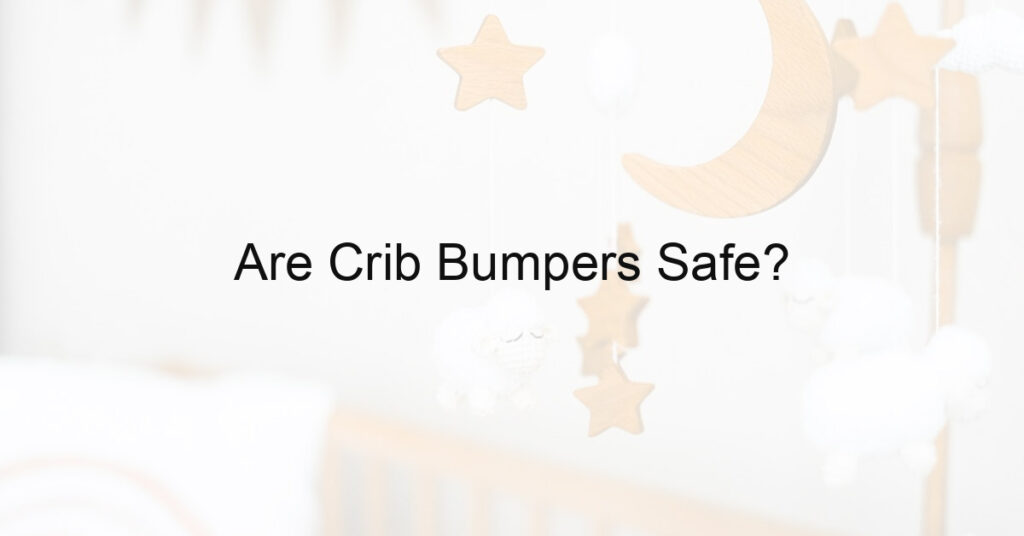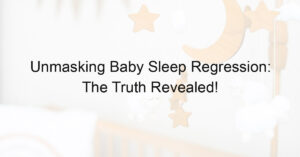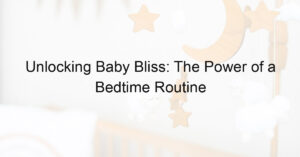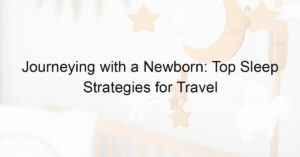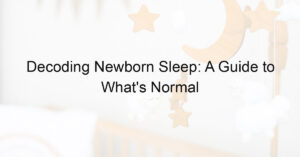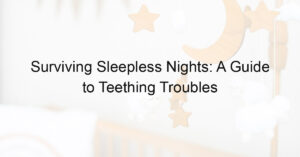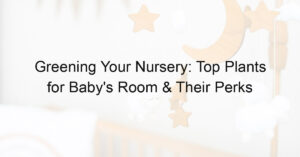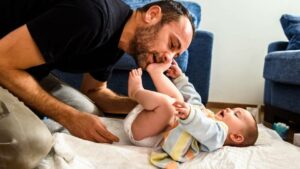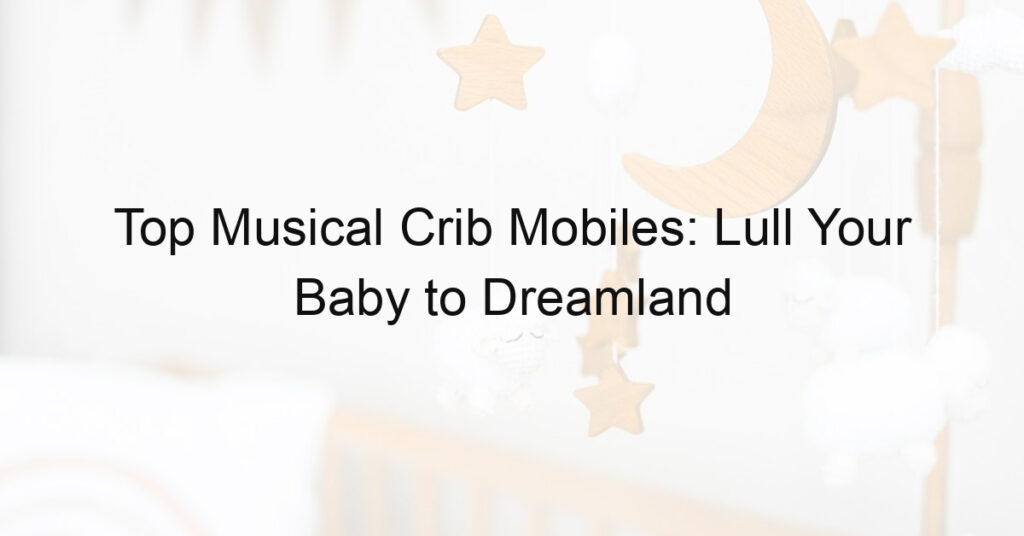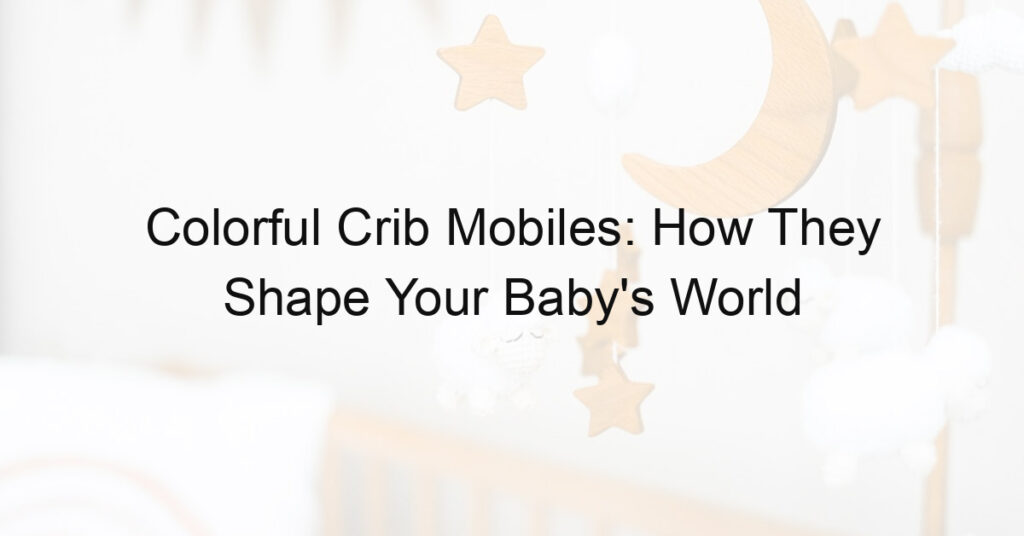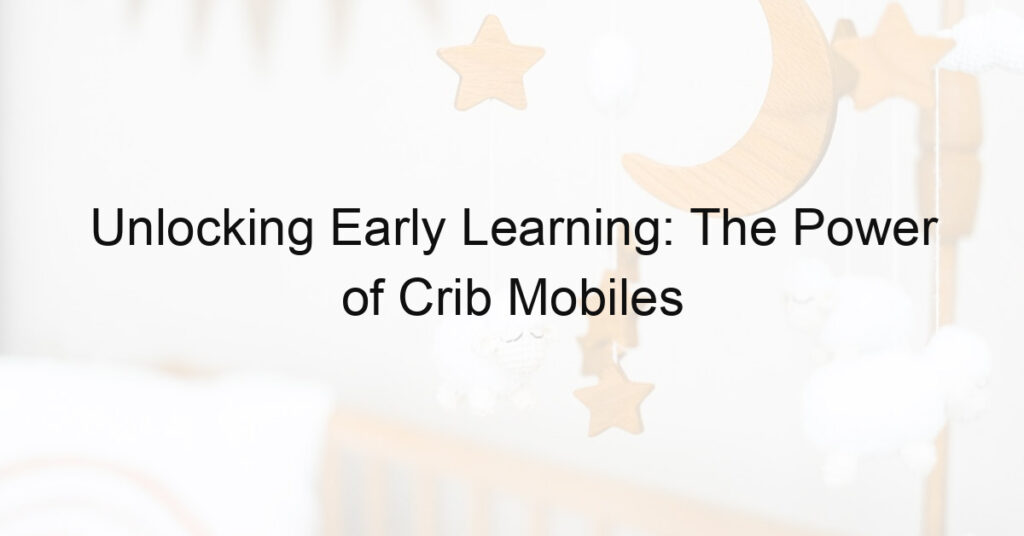The debate over crib bumpers has been raging for years, with some parents swearing by the extra layer of protection they provide their little ones and others arguing that the risks outweigh any potential benefits.
The American Academy of Pediatrics (AAP) recommends not using any soft objects such as pillows, blankets, or crib bumpers in a baby’s sleep area due to the potential for suffocation.
Crib bumpers are marketed as providing extra cushioning and helping prevent babies from hitting their heads against hard crib walls.
But studies have shown that these seemingly harmless products can be dangerous.
Research suggests that crib bumpers are associated with an increased risk of suffocation and strangulation—especially for infants younger than 12 months old.
What Is Age Safe for Crib Bumpers?
Most experts agree that crib bumpers should not be used at all for infants younger than 12 months old.
Once a baby is older and more active, the risk of accidentally becoming entangled in the bumper ties or wedging their heads between it and the bed decreases significantly.
The AAP also states that even if you decide to use them after your baby turns one year old, it’s essential to choose a thin bumper that fits snugly around the entire perimeter of the crib and is securely attached with strong ties.
Additionally, they recommend leaving enough space between the edge of the bumper and the mattress so that a baby can’t put their head into it.
When in doubt, err on the side of caution and avoid using crib bumpers. The safest sleep environment for your baby is one that’s free of any soft objects or extra padding.
For more information about creating a safe sleeping environment for infants and young children, visit the American Academy of Pediatrics website.
Are Breathable Crib Bumpers Safe?
Breathable crib bumpers are touted as a safer alternative to traditional bumpers, but experts still recommend avoiding them.
Even so-called “breathable” materials can cause suffocation if a baby’s mouth and nose become covered.
The bottom line is that there is no such thing as a safe crib bumper—no matter how breathable or well-ventilated it may be—so it’s best to stick with the safest sleeping environment for your baby: one that’s free of any soft objects or extra padding.
By following this advice, you can help protect your little one while they sleep and take comfort in knowing their safety comes first.
Are Mesh Crib Bumpers OK?
Mesh crib bumpers are gaining popularity as an alternative to traditional padded bumpers, but experts caution that they can still pose a suffocation risk.
The American Academy of Pediatrics recommends against using any type of bumper in an infant’s sleep environment and instead suggests placing only the fitted sheet on the mattress and ensuring that no other soft objects or loose bedding are present in the crib.
For parents who want added protection for their baby’s head or limbs, mesh guards may be an option—although even breathable materials should never cover a baby’s face or limbs completely.
Ultimately, avoiding all types of crib bumpers is the safest bet for your infant.
The best way to protect your baby while they sleep is to create an environment that’s free of any extra paddings or soft objects, such as pillows, blankets, and bedding.
This way you can rest assured that your little one is sleeping safely and soundly each night.
No matter which type of bumper you choose to use (or not), always be sure to follow the American Academy of Pediatrics guidelines for safe sleep practices.
With their help, you can keep your baby safe from potential risks and create a secure sleeping space for them. Safe sleep everyone!
Are Mesh Bumpers SIDS Safe?
No type of crib bumper is considered safe enough to protect against Sudden Infant Death Syndrome (SIDS).
It’s important to remember that the safest sleep environment for an infant is one that’s free of any soft objects or extra padding.
Mesh bumpers, breathable bumpers, and traditional padded bumpers all come with potential risks including suffocation and entanglement, so it’s best to avoid using them altogether.
Following the American Academy of Pediatrics guidelines for safe sleep practices, you can help ensure your baby has a secure sleeping environment each night.
The AAP recommends placing only the fitted sheet on the mattress and ensuring that no other soft objects or loose bedding are present in the crib.
As always, consult your doctor with any specific questions or concerns about safe sleep practices for your child.
With their help and guidance, you can rest easy knowing that you’re providing a safe sleeping environment for your baby every night.
Conclusion
Crib bumpers, including mesh and breathable varieties, have recently gained popularity as a way to protect a baby’s head or limbs from becoming wedged between crib slats.
However, experts still recommend avoiding all types of crib bumpers due to the potential risks associated with them.
The safest sleep environment for an infant is one that’s free of any soft objects or extra padding.
By following the American Academy of Pediatrics guidelines for safe sleep practices and ensuring there are no other soft objects or loose bedding in your baby’s sleep space, you can help keep them safe and sound throughout the night.
Remember: safety always comes first! By taking these precautions now, you can be sure that your little one is protected every night.
Sweet dreams!
